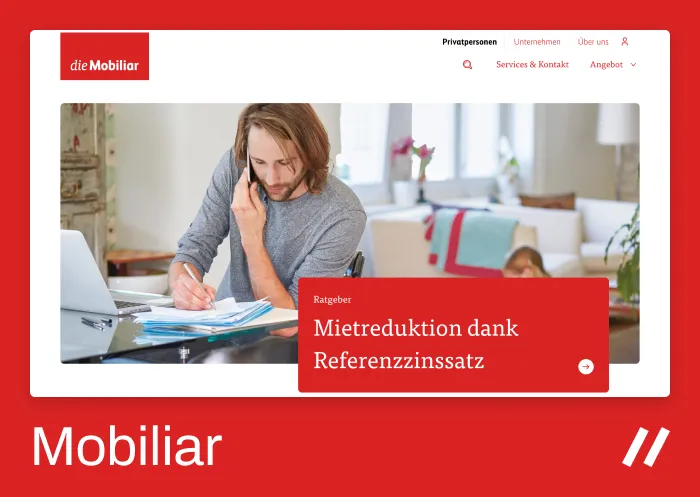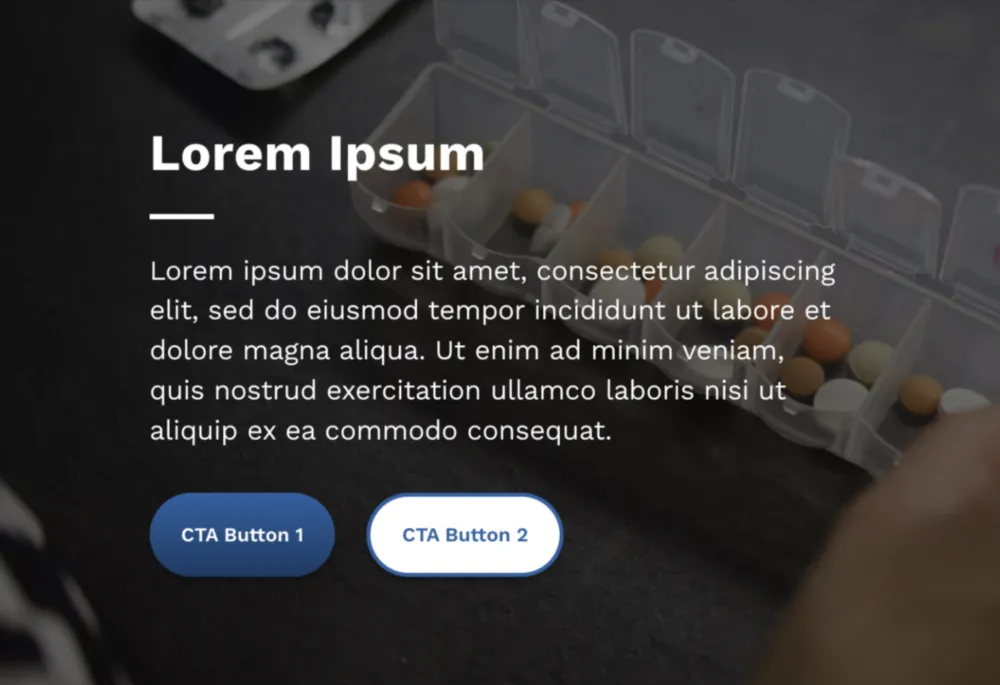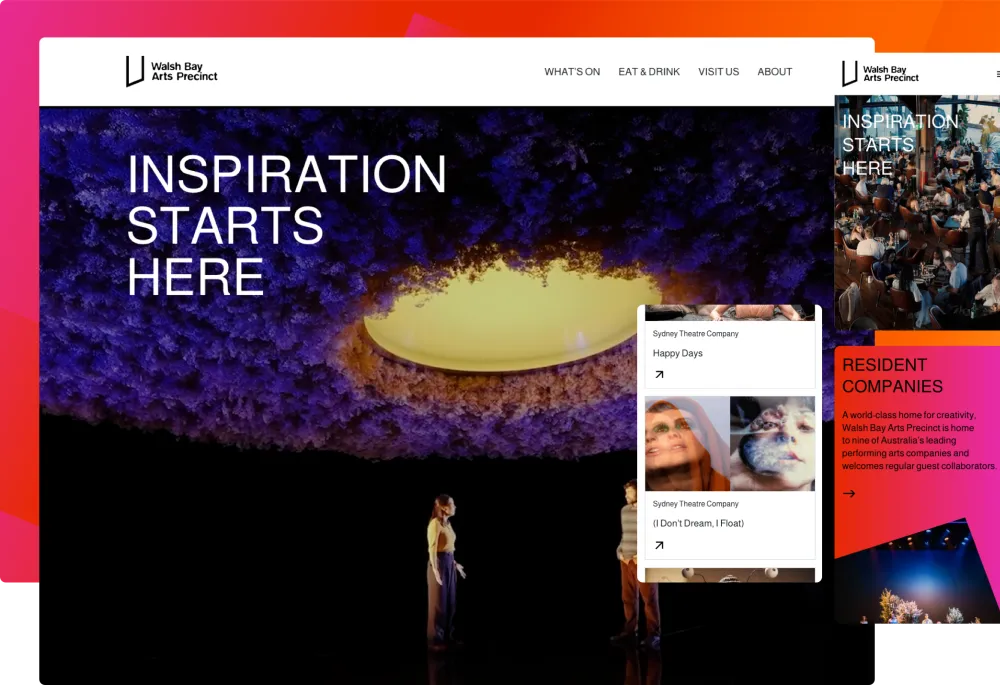Sector(s)
Team Members
Project Team
Mobiliar: Christoph Wälchli, Delia Inniger, Yannick Huot, David Freiburghaus, Roger Eicher, Olgu Günal, Kevin Kreuzer
Liip: Adrien Peisl, Sabine Brunner, Tereza Peneva, Daniel Lerch, Lennart Jegge, Jonathan Droz, Jonathan Minder, Xenia Imbach, Petra Schmäh, Philipp Klein, Annina von Planta, Susanne Perreijn
Visit the site
Visit the siteOrganizations Involved
Community contributions
Because we use this Liip module, some patches and improvements has been made to the following:
- graphql_core_schema
- graphql_extra_cache
- texts
- icon_select
- rokka
Mobiliar, founded in 1826, is Switzerland’s oldest private insurance company. Operating as a cooperative, it allows policyholders to share in its success and offers a comprehensive range of insurance products, including property, liability, life, and business insurance. With a strong local presence through numerous agencies, Mobiliar is recognized for its customer-centric approach.
As user expectations for digital services evolved, so did the demands on Mobiliar’s corporate website. Originally relaunched on Drupal in 2016, the site expanded organically over the years.. Over time, content was developed and published across various departments to meet diverse business needs. However, the lack of a cohesive strategy led to fragmented information, and duplicate pages, making navigation increasingly complex for users. The expanding volume of content and an inconsistent information architecture resulted in difficulties in finding relevant information efficiently.
Additionally, the website faced technological challenges, requiring ongoing updates to handle unstructured data and adapt to evolving digital requirements. Visually, the site had remained largely unchanged since its launch, no longer aligning with Mobiliar’s evolving brand identity and UX guidelines. These factors underscored the need for a comprehensive digital transformation to enhance usability, maintain technological relevance, and provide a seamless user experience.
Mobiliar initiated a full-scale relaunch in 2022 to future-proof its digital presence. Together with Liip, the company set out to reimagine its corporate website as the backbone of its digital communications strategy — one that could meet the hybrid needs of today’s users while staying true to Mobiliar’s cooperative values and human-centric brand.
The Mobiliar website relaunch was driven by several key goals: aligning the digital presence with the company’s updated brand values, enhancing hybrid customer journeys, and ensuring scalability and flexibility of the website for future growth. Additionally, the project aimed to expand self-service capabilities and establish a consistent, barrier-free language across all content. By addressing these priorities, Mobiliar sought to create a more user-friendly, accessible, and future-proof digital platform.
Spanning over two years, the project followed a structured timeline with major milestones, including extensive user research and UX discovery phases, technical implementation and hosting setup, and finally, the official go-live in June 2024. What made this project particularly complex was the scale of change within a large organisation, requiring seamless collaboration between multiple teams and departments. A key challenge was maintaining parts of the existing website while simultaneously building entirely new instances.
Through an agile project management approach, the team successfully navigated these challenges. The outcome is a future-ready, Drupal-based platform that significantly improved content discoverability, and delivered a consistent, modern user experience across devices. The relaunch strengthened Mobiliar’s online presence and provided the foundation for continuous digital innovation.
To keep the scope of the relaunch manageable and build on Mobiliar’s positive experience with Drupal, the decision was made to continue using the platform. The existing Drupal setup had demonstrated strong reliability and flexibility, especially in managing complex, multilingual content structures. Continuing with Drupal allowed the team to reuse existing technical components within the new Drupal instance, ensuring efficiency and consistency.

Technical Specifications
Drupal version:
Key modules/theme/distribution used:
A selection of Modules we rely on:
- Fastly: Integrates Drupal with the Fastly CDN to enhance website performance through real-time content delivery and caching
- GraphQL Core Schema: Automatically exposes a configurable GraphQL schema based on your entity types and fields, facilitating efficient data querying
- JSON-API Extras: Provides customization options for the default JSON:API implementation, allowing you to tailor API endpoints, field visibility, and naming conventions
- Migrate Plus: Extends Drupal's core migration framework with additional features and examples, simplifying complex data migrations from various sources
- Paragraphs: Offers a flexible content creation method by enabling the use of customizable paragraph types, enhancing the editing experience for content creators
- Pathauto: Automatically generates SEO-friendly URL aliases for content types, taxonomy terms, and users, eliminating the need for manual path creation
- Queue UI: Provides a user interface for viewing and managing Drupal queues, allowing administrators to process and monitor queued tasks efficiently
- Redis: Integrates Drupal with the Redis key-value store to improve performance by providing caching, locking, and queue backends
- Rokka: Integrates the Rokka.io image service with Drupal, replacing local file storage and image style handling for optimized image delivery
- Salesforce Suite: Enables synchronization between Drupal entities and Salesforce objects, supporting both real-time and batch data transfers
- Search API Algolia: Integrates Algolia's search capabilities with Drupal's Search API, allowing for efficient indexing and retrieval of content
- Symfony Mailer: Replaces Drupal's default mail system with Symfony Mailer, offering advanced features like HTML emails, file attachments, and third-party delivery integrations
- Texts: Allows management and translation of strings using a key-based approach, facilitating frontend translations in decoupled environments
- Webform REST: Enables retrieval and submission of webforms via RESTful APIs, allowing for integration with external applications and services





